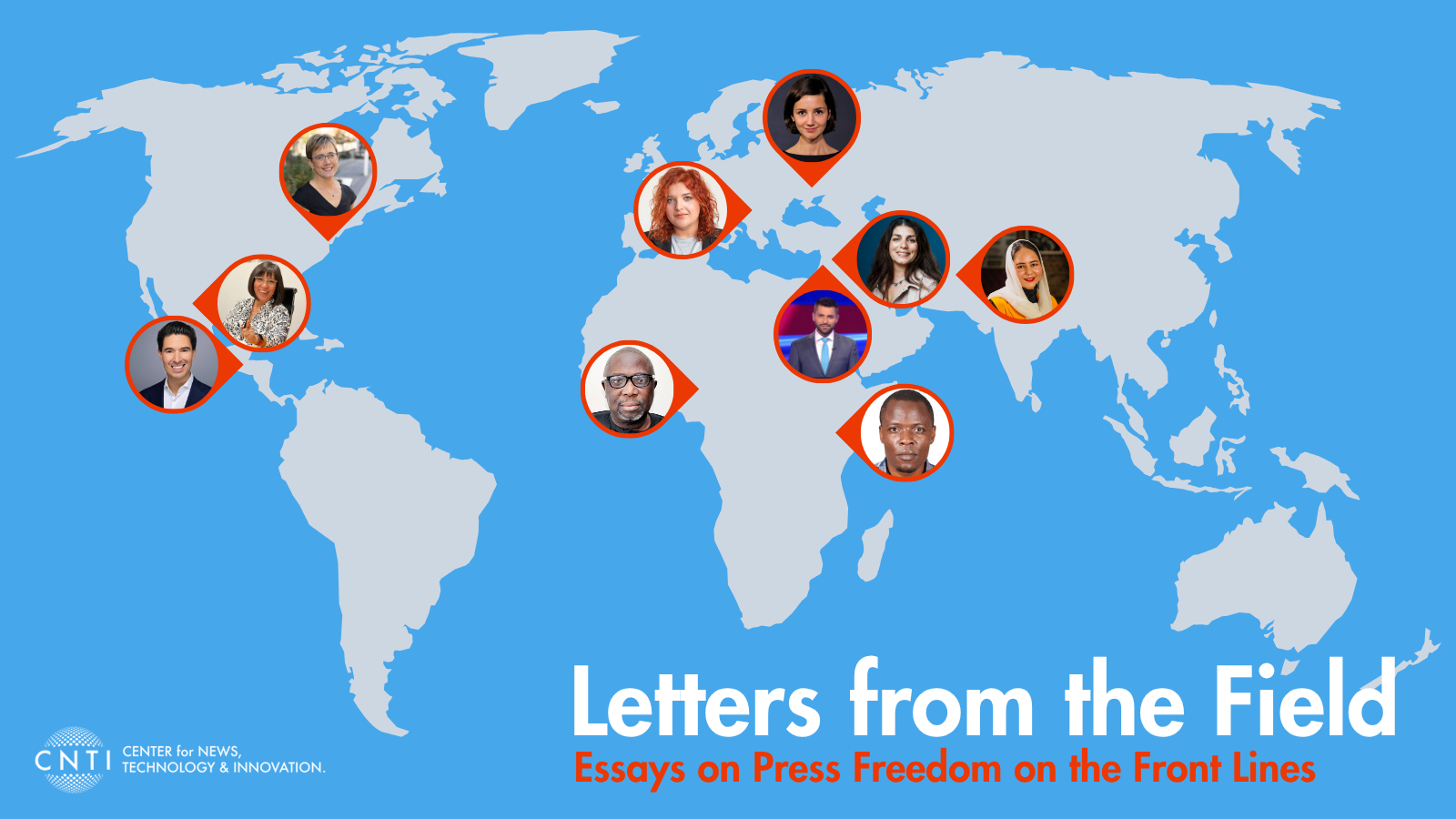By Mike Webb, Amy Mitchell, Karen Wickre and Kayla Goodson

After 40 hours that included 54 sessions, a half dozen ad hoc discussions and countless serendipitous conversations, Newsgeist 2025 is on the books. From October 10 to 12, 180 participants gathered in Phoenix, Arizona, for this year’s Newsgeist, the latest in a long line of Newgeists, and the first under CNTI’s stewardship.
Newsgeist is an unconference: the agenda is not pre-planned. On the first night, the participants shared session ideas — ranging from journalistic neutrality in wartime to what journalism can learn from K-Pop to investigative journalism with TikTok DNA — which were then organized into an always adaptable mix of choices. Newsgeist operated under the Chatham House Rule. There were no “speakers,” only session moderators to help manage the flow of conversations.
The takeaways below don’t represent the full range of everything discussed at Newsgeist, nor do they suggest a consensus among participants; instead, we’ve identified broad themes that arose across the weekend.
Articulating Journalism’s Value
Does journalism need a marketing campaign? A theme across several sessions was the need to do a better job of articulating journalism’s value, but to be able to do that, journalists need to first articulate for themselves what that value is and how it is changing. This is not a new problem, as CNTI’s research has shown, but it has become even more urgent today.
While the general consensus was that journalism should still mean verifiable, fact-based reporting, participants acknowledged that such journalism is now happening across a variety of platforms and from a larger number of players than ever before. As one participant put it, “Journalism with a capital J isn’t intrinsically important anymore,” explaining that a small number of traditional outlets that were seen as authoritative sources are no longer the only way people get news. Instead, many people are turning to non-traditional outlets and news producers with a specialized focus or who target local and underserved audiences. In this changing environment, journalism’s value must go beyond just updating audiences, several participants said; news practitioners must be able to demonstrate how journalism is helping news consumers live their daily lives.
Some participants also argued that rather than try to prevent people from going to social media, individual brands or AI to get informed, journalists could instead explore what makes these tools attractive, valued choices: What role do these tools serve, and what can journalism producers learn from that? The public will continue to turn to a mix of tools and sources for their information, and, in many cases, they will prioritize sources that give them some kind of shared experience instead of a top-down rendering of the day’s news.
Innovation in Journalism
Another repeated theme was the need to push the industry’s thinking around new approaches and products for public relevance and business success. Many participants also shared in the acknowledgement that journalism has not historically taken well to adaptation and technological ideation. It will take real effort for the industry to become more innovative — and it may require traditional newsrooms to adopt some characteristics that are more natural to newer, creator-type journalists.
Several participants remarked that the news industry can learn from the technology industry when it comes to rapid experimentation, shared learning, mentorship and data testing — skills that “traditional” journalism is not known for but that can help foster new voices and approaches that better serve today’s consumers.
The news industry can also better adopt and internalize new technology to enhance and empower the work of journalists in ways not before possible. This may be even more pertinent in the age of AI: “In the age of advertisements, the metric of value exchange was the impression. In the era of traffic, the metric of value exchange was the click. In the era of generative AI, the metric of value exchange is the fact,” one participant said. Participants did not agree on the extent to which the news industry should use AI, noting that the industry needs to better understand both the value and limitations of AI and other emerging technologies in order to be more strategic, and less reactive, to innovation. There was agreement, however, that journalism must act and figure out how to be part of the change.
Other innovative ideas focused on things that bring communities together, such as ways to crowd-source local needs, needs-based audience surveys and more. And some wondered whether we need to rethink the structure of journalism itself, asking “How do we support journalists who operate outside any kind of institution?”
Journalistic Independence and Safety
Journalists are facing increased threats around the world — and newly so in the United States — including deportation, violence, government-imposed restrictions and harassment from people in power, bringing journalistic freedom and safety top of mind for many participants. Several participants emphasized that these threats are not a future issue; they are happening now, and journalists need to be prepared to respond.
The group shared many ideas for ways to respond, such as maintaining decentralized networks to protect journalists, sources and content; creating more solidarity and public awareness around journalism’s work; building relationships throughout a community in order to reach all members when reporting on threats to health and safety, such as pandemics; emphasizing journalism’s role as giving a voice to the voiceless; and consistently covering attacks on free expression and press freedom. Several people also made the point that journalists in the United States have much to learn from journalists in other countries who have or are currently experiencing threats against press freedom.
We were also reminded that media independence goes beyond independence from government interference and control. Participants shared instances where ownership structures and funding reliance hampered journalistic independence — highlighting the need for journalism producers to build strategies for self-sustainability.
Trust, Truth and Activating the Audience
Newsgeist featured powerful discussions around truth and facts, what they each mean and how they fit together with trust. Information is always filtered through personal experience; what feels true to one person may not feel true for someone else. As one participant said, “We need to ask ourselves who we’re willing to hear the truth from, and who our audience is willing to hear it from, and why.”
- Questions about trust and truth came up across our sessions: sessions:
- Can a slate of more diverse viewpoints lead to greater trust in news organizations? What does doing that authentically require?
- Did Jimmy Kimmel’s experience show that the public will activate when corporations or the government attempt to censor or ban content?
- How do journalists demonstrate that they can respect their audiences who might be skeptical or negative towards them? How best to hear and engage with those communities?
- Is it possible for corporate owners and publishers to support their newsrooms in disputes over editorial control?
- How can news organizations do a better job of supporting one another when one among them is treated unfairly?
Participants broadly agreed that reporting the truth is the answer to regaining public trust — but as one person noted, “Truth by itself is not a culture. If we want to create kinder communities, how would we report differently?” This openness to rethinking how the audience receives information will be key to rebuilding trust, but it will require a rethinking of how journalism is practiced.
CNTI gives our thanks to the financial sponsors of this Newsgeist, Google and The Knight Foundation, and to everyone who came and created such a rich 40 hours. We hope the conversations continue, both in and outside of Newsgeist.


